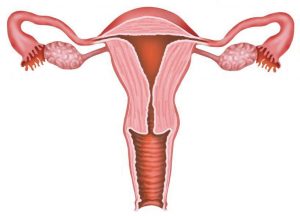Leiomyosarcoma is a rare type of malignant tumor that develops from smooth muscle cells. The neoplasm mainly affects the esophagus, intestines, uterus.
This type of oncology is recognized as one of the most aggressive. It is characterized by rapid tumor growth and early spread of metastases. After the course of treatment, more than half of the patients experience a relapse.
Symptoms
Symptoms of leiomyosarcoma are divided into general, characteristic for all types of oncology, and local, associated with the localization of the neoplasm.
Common symptoms include:
drastic weight loss;
lack of appetite;
anemia;
bleeding;
nervousness;
subfebrile body temperature;
weakness;
nausea.
Of the local symptoms, the following can be distinguished:
Common symptoms of uterine leiomyosarcoma include thrombosis or thrombophlebitis. As the tumor grows, the uterus grows in size. This can lead to profuse discharge during your period. In women in menopause, spotting is possible. If the tumor could not be detected in the initial stages, women experience exhaustion, ascites. If metastases penetrate into the lungs – pleurisy develops, in the liver – jaundice, in the spine – severe pain.
When the bladder is damaged, blood appears in the urine, the nature of urination changes, the patient experiences pain in the lower abdomen.
When the digestive tract is affected, nausea, pain in the epigastric region, lack of appetite, weight loss, impaired stool, often observed heartburn, flatulence. In the last stages, bleeding is possible.
Diagnostics of the leiomyosarcoma
To diagnose leiomyosarcoma, the doctor conducts an examination, takes anamnesis, prescribes an examination, which includes the following methods:
Ultrasound. It is carried out to assess the state of internal organs, to clarify the location and size of the tumor.
CT, MRI. The techniques allow visualizing internal organs to detect neoplasms and metastases in them.
Fiber-fiber endoscopy of the esophagus, stomach, duodenum 12, large intestine.
Biopsy with histological analysis. Allows you to accurately determine the type of tumor.
Treatment
When choosing therapeutic tactics, the oncologist takes into account the stage of the leiomyosarcoma, as well as the general condition of the patient. Treatment can be based on the following methods:
Surgical removal of the tumor. During the operation, the surgeon performs excision of the neoplasm, surrounding tissues, metastases, if any.
Chemotherapy https://en.wikipedia.org/wiki/Chemotherapy. The technique is prescribed before or after surgery. Also used in the development of recurrence or growth of metastases.
Targeted therapy. An innovative technique aimed at destroying atypical cells. At the same time, healthy tissues are not affected.
The prognosis for leiomyosarcoma of the uterus and other internal organs depends on the stage of the tumor process and the reaction of the neoplasm to the treatment. If the tumor is detected at the initial stages, it is possible to achieve cure or long-term remission. If a malignant tumor is found in the late stages, the survival rate drops sharply. In addition, even after completing the full course of treatment, patients often relapse.
